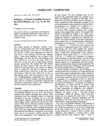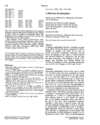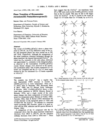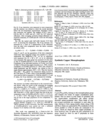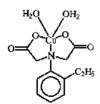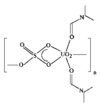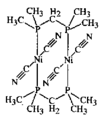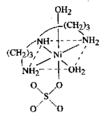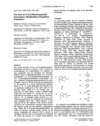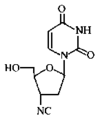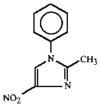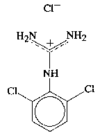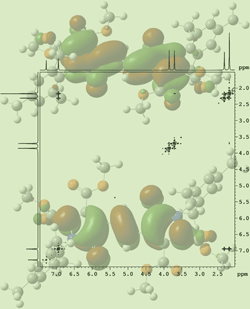issue contents
August 1995 issue
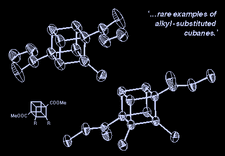
Cover illustration: Dimethyl 2-Methylcubane-1,4-dicarboxylate and Dimethyl 2,3-Dimethylcubane-1,4-dicarboxylate, see Cristiano, Gable, Lowe & Tsanaktsidis, pages 1658-1661. Displacement ellipsoids are plotted at the 50% probability level.
inorganic compounds
Download citation


Download citation


The structure of PrMo8O14 contains a mixture of cis-edge- sharing and trans bicapped octahedral Mo8 clusters in the ratio 2:1. The oxygen framework derives from a packing of close-packed layers with the sequence ABAC, and the Pr3+ ions are surrounded by twelve O atoms forming a distorted cuboctahedron.
Download citation


Download citation


The structure of σ-Ba2P2O7 contains columns of Ba atoms in sites of eleven- and tenfold coordination and is unlike those of any of the known allotropes of other alkaline earth diphosphates.
Download citation


Download citation


The crystal of [Cr(NH3)6][CuCl5] studied is cubic at high temperature but transforms to a twinned tetragonal phase with three components at 259.2 K. The geometry of the [CuCl5]3− ion changes dramatically from trigonal bipyramidal in the high-temperature phase to deformed square pyramidal in the low-temperature phase.
Download citation


Download citation


The structure of Cu9O2(PO4)4(OH)2 contains five kinds of copper–oxygen polyhedra. One Cu atom lies at a centre of symmetry and has square-planar coordination geometry, the others occupy sites with distorted square-pyramidal coordination geometry.
metal-organic compounds
Download citation


Download citation


Download citation


Download citation


Download citation


Download citation


Download citation


Download citation


Download citation


Download citation


Download citation


Download citation


Download citation


Download citation


Download citation


Download citation


Download citation


Download citation


Download citation


Download citation


Download citation


Download citation


Download citation


Download citation


Download citation


Download citation


Download citation


Download citation


Download citation


Download citation


Download citation


Download citation


Download citation


Download citation


Download citation


Download citation


Download citation


Download citation


Download citation


Download citation


Download citation


Download citation


Download citation


Download citation


Download citation


Download citation


Download citation


Download citation


Download citation


Download citation


Download citation


Download citation


Download citation


Download citation


Download citation


Download citation


Download citation


Download citation


Download citation


Download citation


Download citation


Download citation


Download citation


Download citation


Download citation


Download citation


Download citation


Download citation


Download citation


Download citation


Download citation


Download citation


Download citation


Download citation


organic compounds
Download citation


Download citation


Download citation


Download citation


Download citation


Download citation


Download citation


Download citation


Download citation


Download citation


Download citation


Download citation


Download citation


Download citation


Download citation


Download citation


Download citation


Download citation


Download citation


Download citation


Download citation


Download citation


Download citation


Download citation


Download citation


Download citation


Download citation


Download citation


Download citation


Download citation


Download citation


Download citation


Download citation


Download citation


Download citation


Download citation


Download citation


Download citation


Download citation


Download citation


Download citation


Download citation


Download citation


Download citation


Download citation


Download citation


Download citation


Download citation


Download citation


Download citation


Download citation


Download citation


Download citation


Download citation


Download citation


Download citation


Download citation


Download citation


Download citation


Download citation


Download citation


Download citation


Download citation


Download citation


Download citation


Download citation


Download citation


Download citation


Download citation


Download citation


Download citation


Download citation


Download citation


Download citation


Download citation


Download citation


Download citation


Download citation


Download citation


Download citation


Download citation


Download citation


Download citation


Download citation


Download citation


Download citation


Download citation


Download citation


Download citation


Download citation


Download citation


Download citation


Download citation


Download citation


Download citation


Download citation


Download citation


Download citation


Download citation


Download citation


Download citation


Download citation


Download citation


Download citation


Download citation


Download citation


Download citation


Download citation




 journal menu
journal menu











